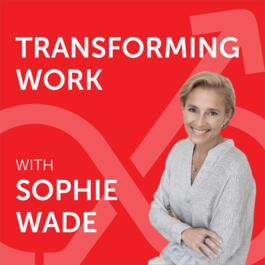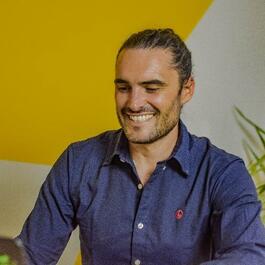
Chase Warrington — The Art and Craft of Work: Intentional Connection and Documentation
Chase Warrington is Head of Remote at Doist, a LinkedIn Top Voice on Remote Work, Global Top 20 Future of Work Influencer, Future of Work advisor, and host of the About Abroad podcast. Chase discusses his more than 15 years of remote team leadership. He shares insights, strategies, and tactics to elevate culture and connection—with a strong in-person strategy—across a fully distributed company. Chase explains how they select and onboard people effectively and teach employees how to work well asynchronously with a foundation of a culture of documentation. KEY TAKEAWAYS [02:40] Chase has moved to Crete for a few months for a new work/life environment and experience. [03:27] At college, Chase’s international studies pair him with students in Shanghai to work on a project. [04:34] Chase enjoys an internship experience working in media in China. [05:10] Learning a different language, with different expectations around work, and a foreign culture. [07:14] How Chase figured out working in a cubicle was not for him. [07:56] How Chase’s mother turned her nursing career into a remote job working 4 days a week in 1999! [09:02] Chase starts looking for jobs that will allow him not to be office-based. [10:14] Negotiating with a prospective employer to be on the one team that works remotely. [11:34] Learning early how to work asynchronously. [12:42] Experiencing firsthand, the disadvantage of being remote from a great office culture. [14:54] Chase takes a gap year with his wife, traveling and working. [16:16] Missing being part of a team, Chase looks for a rare fully-remote non-engineer job. [17:52] Chase joins Doist heading up their international marketing team. [18:58] How to make Doist a company synonymous with remote work—part of the wave of the future. [19:59] After the pandemic hits, how can they stay at the forefront of the remote evolution to help build the Future of Work? [22:30] Doist finds most people in N. America and Europe work in similar ways, resulting in an inward focus developing new products. [24:51] Chase focuses on culture and connection to improve Doist’s already high remote working standards. [26:01] Chase does internal and external research to figure out how to build more meaningful connections. [27:28] With a culture of strong documentation, they rethink their central source of truth approach. [29:32] Chase restructures and formalizes the focus on culture and connection—their IRL Strategy. [31:19] How Doist employees work hyper asynchronously! [32:25] How to connect people socially who work very asynchronously. [33:47] The purposeful way Doist handles onboarding—in-person and online. [34:40] New hires are assigned a mentor for six months. [35:58] Doist tries to schedule two synchronous activities a month and two whole company trips a year. [37:38] The people that come to asynchronous companies, and those who leave them. [39:38] The role of local communities in supporting remote working employees. [42:41] Changing the way we work is not easy, Chase encourages leaders to think about if they are building for yesterday, today, or tomorrow. [44:42] A strong in-person strategy—including offsites and retreats—is key to building strong remote companies. [46:58] On About Abroad, Chase’s podcast. [49:05] IMMEDIATE ACTION TIP: The ultimate goal is for asynchronous work to be the default. Put a stake in the sand for what percentage of asynchronous work you are committing to. Then start optimizing the way your company works. Question every single work-related activity to see if it fits the async or synchronous model better. Create a culture of documentation and meetings become the last resort, not the first. RESOURCES Chase Warrington on LinkedIn Doist.com About Abroad Podcast aboutabroad.com QUOTES (edited) “This proximity bias is something that just happens even in the best, well-intentioned companies.” “There’s plenty of data to back up the fact that while all these CEOs are worried about remote workers not working, they should probably be more worried about burnout and overwork than they should people not showing up to work.” “Nobody reports having, on average, more than five hours of meetings per week!” “We urge people to get out to disconnect from work. You don’t get rewarded for working long hours or being the first or the last one online. We want people to show up fully and disconnect completely.” “We fund people! If you need a co-working space, it’s covered. Gym membership? Covered. Activities outside? Learning and education and social groups? Covered.” “There’s plenty of research out there from unbiased resources that show that while we’re seeing a dip in work-from-home days compared to in the middle of the pandemic, we’re still five, six, seven times where we were pre-pandemic.” “There’s this whole mentality that remote first means remote only, but everybody that has been in this space for a while believes that not to be the case.” “Incorporating a really strong in-person strategy is becoming a core element of doing remote really well.”
From "Transforming Work with Sophie Wade"




Comments
Add comment Feedback